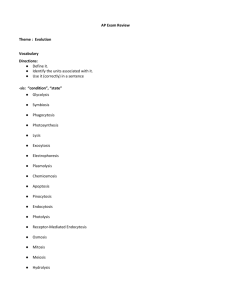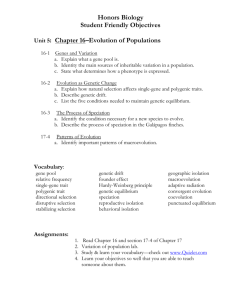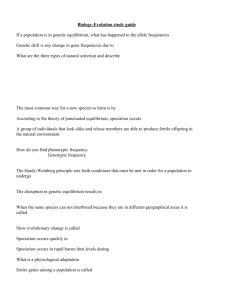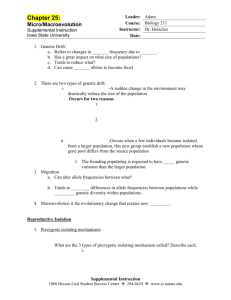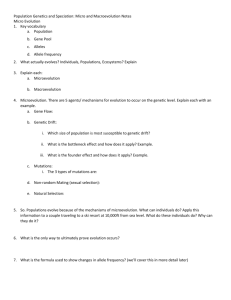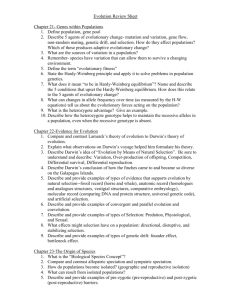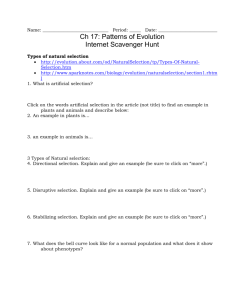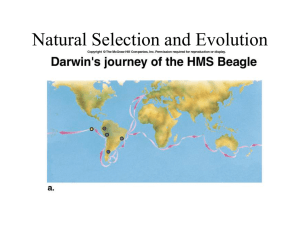Chap 1 Study Guide
advertisement
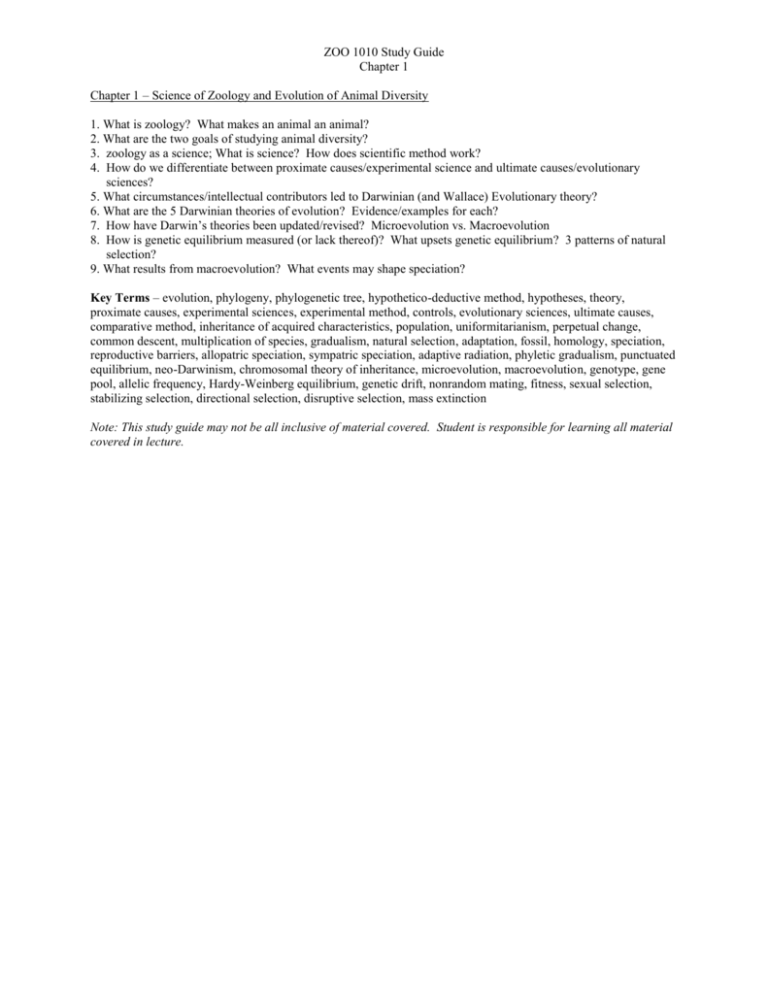
ZOO 1010 Study Guide Chapter 1 Chapter 1 – Science of Zoology and Evolution of Animal Diversity 1. What is zoology? What makes an animal an animal? 2. What are the two goals of studying animal diversity? 3. zoology as a science; What is science? How does scientific method work? 4. How do we differentiate between proximate causes/experimental science and ultimate causes/evolutionary sciences? 5. What circumstances/intellectual contributors led to Darwinian (and Wallace) Evolutionary theory? 6. What are the 5 Darwinian theories of evolution? Evidence/examples for each? 7. How have Darwin’s theories been updated/revised? Microevolution vs. Macroevolution 8. How is genetic equilibrium measured (or lack thereof)? What upsets genetic equilibrium? 3 patterns of natural selection? 9. What results from macroevolution? What events may shape speciation? Key Terms – evolution, phylogeny, phylogenetic tree, hypothetico-deductive method, hypotheses, theory, proximate causes, experimental sciences, experimental method, controls, evolutionary sciences, ultimate causes, comparative method, inheritance of acquired characteristics, population, uniformitarianism, perpetual change, common descent, multiplication of species, gradualism, natural selection, adaptation, fossil, homology, speciation, reproductive barriers, allopatric speciation, sympatric speciation, adaptive radiation, phyletic gradualism, punctuated equilibrium, neo-Darwinism, chromosomal theory of inheritance, microevolution, macroevolution, genotype, gene pool, allelic frequency, Hardy-Weinberg equilibrium, genetic drift, nonrandom mating, fitness, sexual selection, stabilizing selection, directional selection, disruptive selection, mass extinction Note: This study guide may not be all inclusive of material covered. Student is responsible for learning all material covered in lecture.

